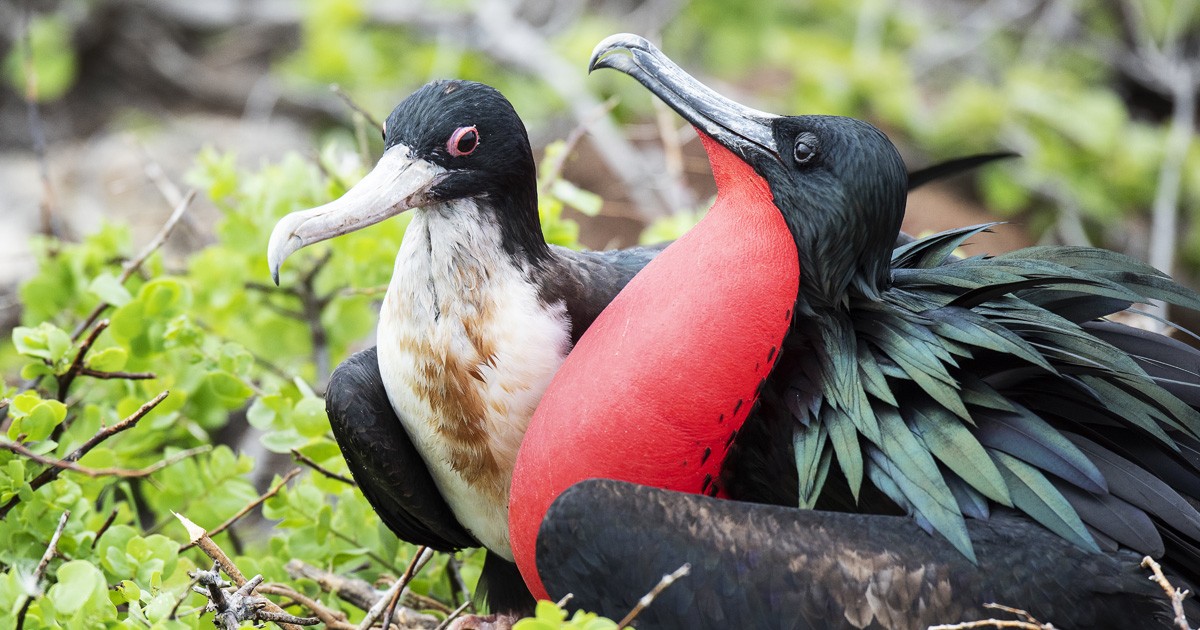March 11, 2025
Press Release: New eDNA Tool Can Detect Invasive Rodents Within an Hour
New environmental DNA technology can help protect vulnerable island ecosystems from destructive invasive species.
We use cookies to help you navigate efficiently and perform certain functions. You will find detailed information about all cookies under each consent category below.
The cookies that are categorized as "Necessary" are stored on your browser as they are essential for enabling the basic functionalities of the site. ...
Necessary cookies are required to enable the basic features of this site, such as providing secure log-in or adjusting your consent preferences. These cookies do not store any personally identifiable data.
Functional cookies help perform certain functionalities like sharing the content of the website on social media platforms, collecting feedback, and other third-party features.
Analytical cookies are used to understand how visitors interact with the website. These cookies help provide information on metrics such as the number of visitors, bounce rate, traffic source, etc.
Performance cookies are used to understand and analyze the key performance indexes of the website which helps in delivering a better user experience for the visitors.
Advertisement cookies are used to provide visitors with customized advertisements based on the pages you visited previously and to analyze the effectiveness of the ad campaigns.
Our new online shop is live!

Media contact: Claudio Uribe - claudio.uribe@islandconservation.org Photos available
The Galapagos National Park Directorate of the Ministry of Environment and Water, together with the not-for-profit organization Island Conservation have declared Seymour Norte Island and Mosquera islet free of invasive rodents. These conservation actions have been carried out over the last two years, with the intention of eradicating invasive vertebrates that affect native biodiversity and preserving the island ecosystems.
In January 2019, park rangers, Island Conservation staff, and drone pilots from Envicto Technologies Ltd. used groundbreaking drone technology to eliminate the black rat (Rattus rattus) and the Norwegian rat (Rattus norvegicus) from Seymour Norte and Mosquera. The drone was equipped with a dispersal bucket and followed GPS-guided transects to distribute a conservation bait manufactured by Bell Laboratories across the island and available rodent habitat. Following initial implementation, bait was placed in stations along the coastline, ensuring no rodents re-invaded the island.
Danny Rueda, director of the Galapagos National Park, confirmed:
After two years of waiting, we can declare these islands are free of rodents. This project has given the expected results, according to the planning and according to the highest protocols for these cases. Galapagos, once again, is a benchmark in terms of the protection of this globally important ecosystem. The impact of this management activity was recorded through appropriate monitoring .”
Víctor Carrión, Ecuador Program Manager at Island Conservation, noted:
In collaboration with the team of experts from the Galapagos National Park Directorate, strict biosecurity measures have been implemented to prevent future invasive rodent reintroductions while enabling tourists to visit Seymour Norte and Mosquera safely.”
As a long-term preventive measure, a biosecurity barrier consisting of 289 bait stations will remain installed to prevent a reinvasion of rodents from Santa Cruz or Baltra.
Free of invasive rodents, Seymour Norte Island and Mosquera Islet will be able to recover; endemic and native plants and animals will be able to fulfill their ecological roles, guaranteeing the hatching of nests and survival of birds and reptiles, including Galapagos Land Iguanas, Blue-footed Boobies, Frigatebirds, and Swallowed-tailed Gulls (the only nocturnal gull on the planet). Restoration also contributes to protecting the habitat of the Lava Gull, one of the rarest species of gulls in the world, categorized as Vulnerable by the International Union for Conservation of Nature (IUCN).
This project was made possible due to support from Lindblad Expeditions-National Geographic Fund, Silversea Cruises, Galapagos Biodiversity & Education for Sustainability fund Ecoventura – Charles Darwin Foundation, Metropolitan Touring, Fondo Especies Invasoras Galapagos, Rapid Response Facility, Bell Labs, International Galápagos Tour Operators Association, individual donors that gave their support through the SOS North Seymour campaign, and other private and public donors.
###
About the Partners
The Galapagos National Park Directorate, established in 1959, covers 97% of the Galapagos Islands’ land surface area while the Galapagos Marine Reserve protects 138,000 km2 / 53,000 square miles of surrounding ocean. The Galapagos National Park Directorate is responsible for the conservation of the ecological integrity and biodiversity of the island and marine ecosystems. They also regulate the community’s sustainable use of Galapagos’ natural resources. The archipelago’s unique fauna and flora inspired Charles Darwin’s origin of species and continues to be a living laboratory of evolution. Acknowledging their global importance, the Galapagos Islands were declared the first UNESCO World Heritage site, a Biosphere Reserve and most recently a Blue Park. Learn more at www.galapagos.gob.ec/en/
Island Conservation is a global, not-for-profit conservation organization that prevents extinctions and restores islands. We work where the concentration of both biodiversity and species extinction is the greatest – islands. Removing a primary threat – introduced invasive vertebrates – is one of the most critical interventions for saving threatened plants and animals. Native island species and ecosystems often recover with little additional intervention, and when animals have gone locally extinct, we reintroduce them. Island Conservation assists land managers and local communities to implement their visions. To date, we have successfully restored 65 islands worldwide, benefiting 1,218 populations of 504 species and subspecies. Learn more at www.islandconservation.org/
Additional Notes
Why Islands – Learn about islands as a conservation priority.
Advancing Drone Technology
Check out other journal entries we think you might be interested in.
Notifications